If you’ve worked in SEO for any amount of time, beginner or veteran, you’ll know that the health niche is ridiculously hard to rank in.
Not only are you competing with industry giants.
You’re also up against an algorithm that scrutinises everything that you do.
YMYL (Your Money Your Life) sites have long been the subject of the most dramatic wins and losses of visibility in Google search.
This, of course, doesn’t take into account sites that either:
This is why, in my not-so-humble opinion, this case study is so interesting.
It’s rare you’ll find a health site case study that dives into detail. Or, any SEO case study for that matter.
I’m not sure about you, 95% of SEO case studies I read, I leave with more questions than what I came in with.
My goal here is to give insight into the inner workings of an SEO strategy for a health site.
**The domain in question is shown throughout the case study. We have permission to share this information. Please don’t tweet me or message me after you’ve done your little Ahrefs analysis. Unless I’ve asked, I don’t care about your opinion.**
I took over this site in June 2021.
Prior to me, it was in the very capable hands of fellow SEO, Adam Durrant.
Note: Adam is an absolute genius and gentleman. Adam truly set the foundation for SEO success early in this brand’s life.
The immediate challenge I was faced with was that the brand had been hit by two consecutive algorithm updates.
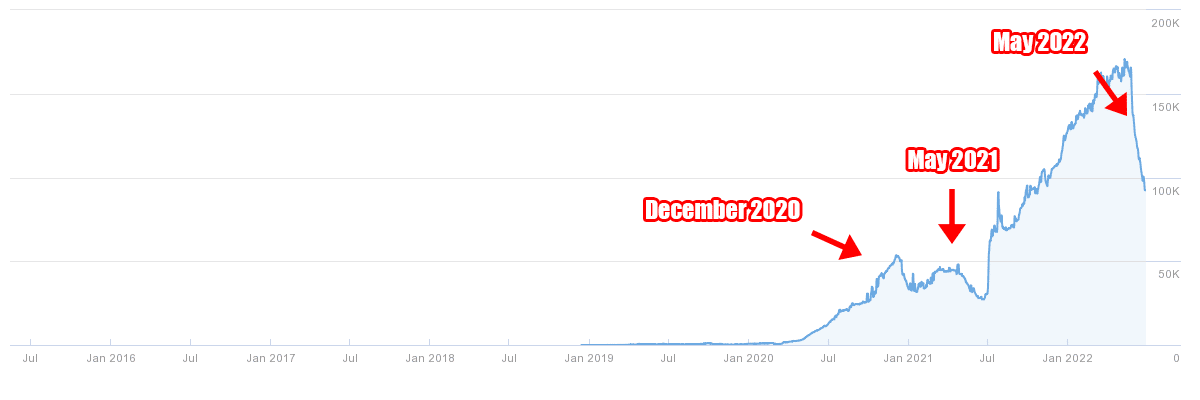
Aside from the bashing that Google gave this website, we also faced the challenge of competing with Healthline, Very Well Health, WebMD and other medical authorities in the space.
And then, finally, we had budget constraints.
Every start-up I’ve worked with has been product-focused, first. And, the quickest way to test market fit, has been through referrals or paid media.
Which left a small-ish budget for SEO.
I’m not saying there’s anything wrong with this strategy. It offers us the opportunity to be smarter with our budgeting decisions.
Our best asset was our depth of knowledge.
We know that brands try to mimic authorities by creating fake personas and relying on the fact Google can’t really identify them.
In our case, we had genuine experts in their fields.
This meant:
Aside from that, we genuinely had a brilliant product.
(If you haven’t read Product Led SEO by Eli Schwartz, I highly recommend it).
We were building our team around this incredibly well-thought-out experience we could offer our customers.
This is something I recognised very early on.
Which helped me identify the core topics and strategies for my link-building efforts and content planning.
I knew if I could leverage our strengths first, it would snowball into other areas of the business.
Our key content themes were:
This was because the SERPs were not as difficult compared to heart disease or cancer.
And that we had nationally-recognised medical professionals on hand to review, and even write, our content.
Now, here’s what you came for (I hope).
The nitty-gritty details, right?
The knowledge bombs.
As always, I don’t hold back. I try to be as transparent as I can without giving too much away that I set myself up for failure.
I don’t graze over details.
Let’s get right in.
Possibly the most misunderstood but most talked about subject in SEO.
No, that’s probably a lie. I’d say LSI keywords (hat-tip Neil Patel and Brian Dean) are up there.
However, I digress.
What I’ll say is that E-A-T can be interpreted however you want.
I view E-A-T as the fundamentals of building a brand.
I always try to apply my SEO approach as if I were working with a brick-and-mortar store.
My goal is to help people trust the information we give them and provide them with the opportunity to validate it.
So, again, bringing it back to a real-life scenario. Here’s what would make me trust a brand.
These are all things we can incorporate into our websites.
Through design, links and our content.
How can I help someone (and Google) trust this information?
Simple.
Firstly, I leverage the existing experts I have.
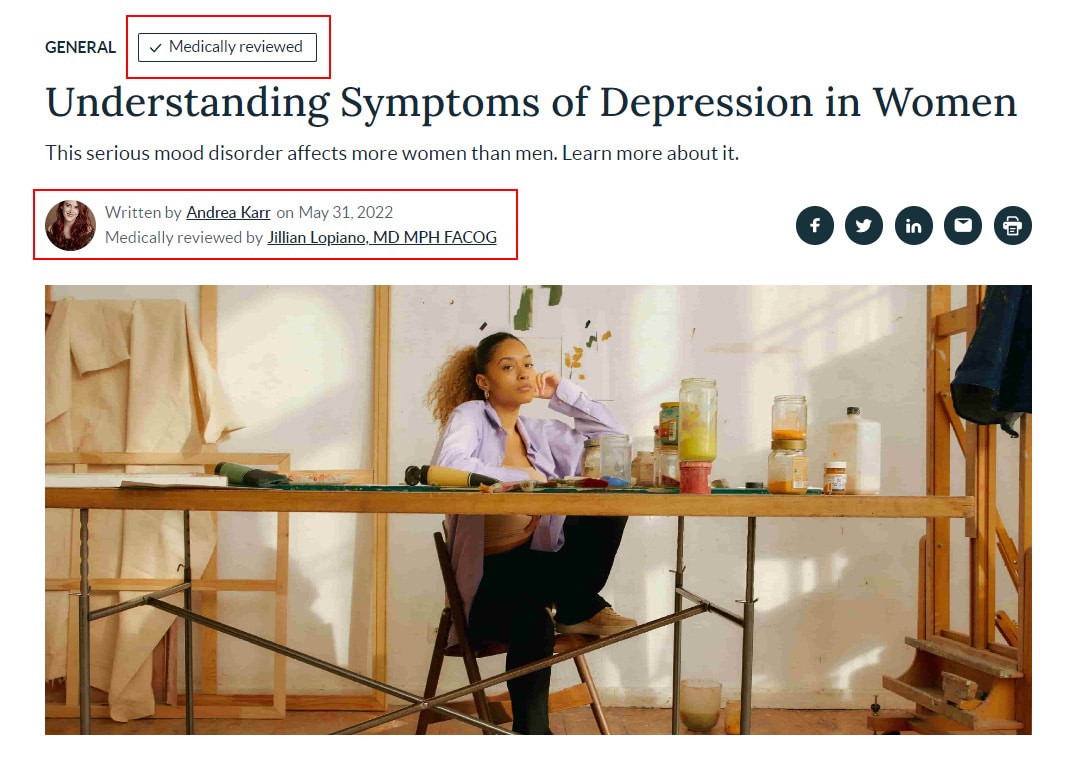
We allowed people to review:
The second step was to openly showcase the medical reviewer’s credentials and experience in their respective field.
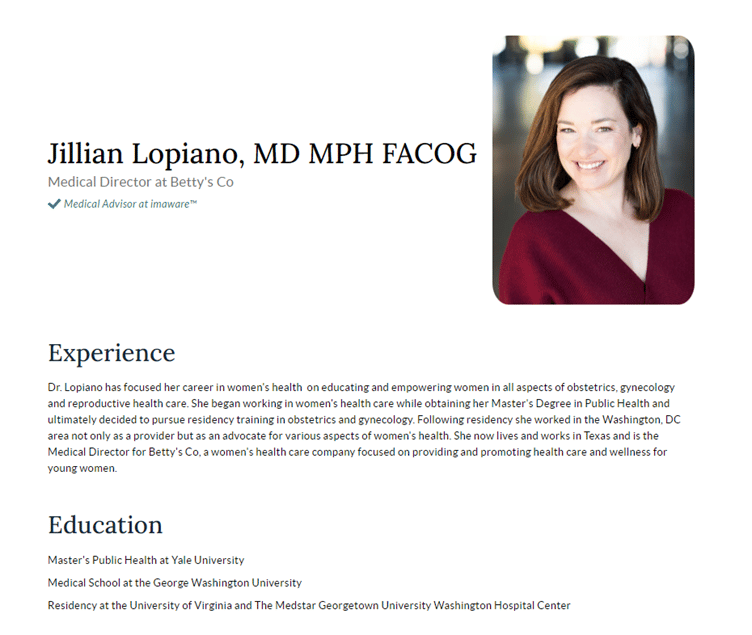
We focused on the three most important questions people will typically ask when researching the legitimacy of content:
Don’t think that because somebody is a medical professional that they have the knowledge to review any medical content.
Focus each area specialist on the topic as closely as possible.
This applies to any industry. It doesn’t just have to be YMYL.
Thirdly, we shouted about our industry-recognised accreditations.
Again, it’s simple logic.
For example, if you wanted somebody to help do your tax returns each year. It’s unlikely that you’d trust someone with your money if they had a Level 1 in Maths.
And a suspicious moustache.
No, you want industry-recognised, specific expertise.
For us, we displayed these accreditations on the homepage, the footer and, anywhere it made sense.
It also helps persuade buyer behaviour if you can include accreditations on your product pages.
We took inspiration from other authorities in our niche to identify where they were listed and what they were showing.

If you’re unsure of any legislation or accreditation requirements available in your industry, you can do a quick search.
Google makes reference to BBB (Better Business Bureau) in their guidelines, too. Keep that in mind as you’re identifying gaps in your website.
And, finally, we displayed all of our press releases for an extra layer of validation.
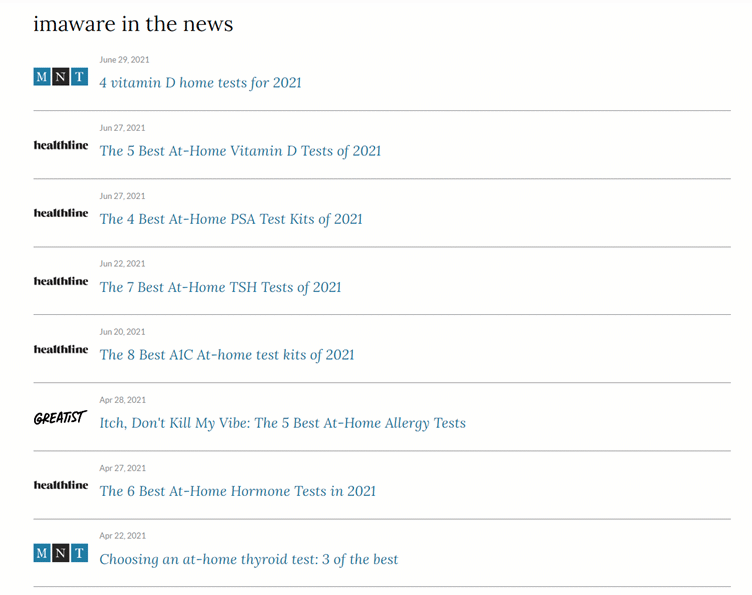
This serves the purpose of ‘what other businesses vouch for this brand?’
Naturally, we avoided including any lesser authority links here.
Don’t feel obligated to mention every website you’ve been featured on. I know they say ‘no PR is bad PR’ but, for the sake of the brand, I recommend focusing on the best potential seed sites in your niche.
Prior to my joining the business, there hadn’t been any active link-building activity.
It was 100% natural because of the business founder and the industry we’re in.
An SEO’s dream.
Links on tap and we didn’t have to do anything for them.
But, we must never rest on our laurels.
Our competitors were building links at a significantly higher rate than we were (and still are).
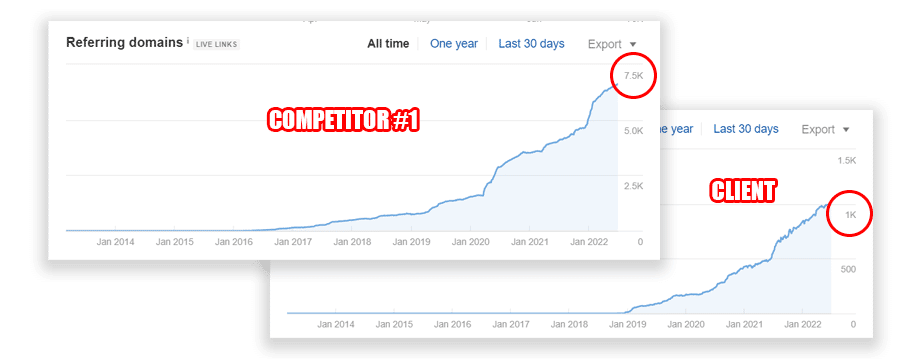
However, looking through their link profile, I could tell the vast majority of their links were low quality.
I based this on:
9/10 of our business competitors were receiving generic guest posts from sites everyone has access to.
That’s not to say it doesn’t work because it clearly does.
If I wanted to close the page-level link quantity gap based on volume alone, I’d be building links for the next 10 years.
So, I plotted their links' average quality and the acquisition timeline.
This helped me figure out:
I wasn’t at any risk of building them too quickly. We had a small team (me) dedicated to links.
I pushed for HARO links.
They’re high-quality, the journalists come to you and, we had the experts to meet journalist requests.
I built, on average, 7 links per month from HARO.
There’s no special secret to landing these types of links.
But, if it’s helpful, here’s how I responded to HARO requests:
By doing this, we managed to land repeat links on huge DR80 and DR90 publications.
Often with millions of visits.
And, when a link was included, it was always sent to our homepage or the author bio page.
My thinking was if we sent natural links to our author pages, it would help connect the dots on the articles they had written or reviewed.
(Naturally, I used sameAs and person Schema to supercharge this whole thing.)
This was one of the weakest areas of the website.
We had overlapping clusters, broken internal links, generic anchors and poor management.
My goal was to tier my internal links.
This isn’t something I see very often in the SEO industry.
The basic idea looks like this:
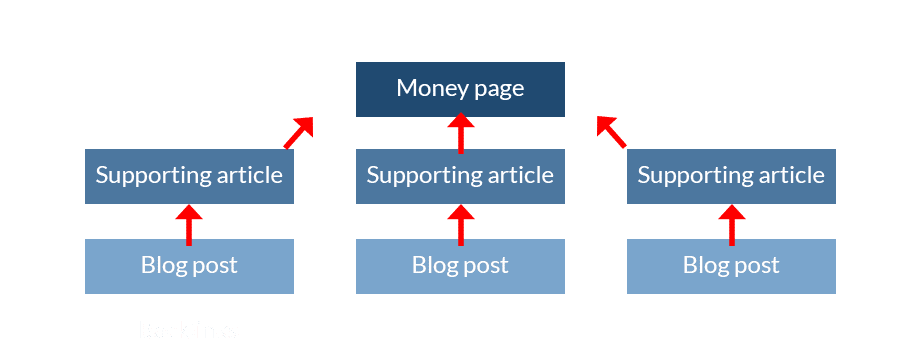
If I could consolidate my efforts into a traditional hub and spoke model but with layers, I knew it would be nothing short of awesome.
However, I didn’t do this in a single month.
I plotted out the best-performing product and worked my way down in order of commercial viability and search opportunity.
I did this monthly.
Here’s exactly what we did:
If that last point is confusing, all I mean is:
The pages with the least traffic opportunity are at the bottom of the tiers. The page with the highest potential would be my money page.
The result?
Each page in the cluster almost doubled the number of ranking keywords it was associated with.
A cluster of pages could go from 1,000 visits to 3,000 visits per month. And my core money pages could move from position 10 to position 4.
Refreshing your content is, without a doubt, one of the most important things you can do.
In the health or medical niches, keeping your information up to date can dramatically improve your chances of being relevant for the query.
I identified these pages by:
When you assess your content, it's important that you do it like-for-like.
What I mean is, don’t compare your content with the authority in your space.
Why?
They’re likely getting away with habits that you simply can’t.
If, for example, Healthline hadn’t updated a piece of content about heart disease in 2 years, I’d see that as an opportunity to improve my content.
Not to simply think ‘oh, it’s fine, they haven’t updated their content, and neither should I’.
Another thing to avoid here is overdoing it.
If you purposely go out of your way to add 1,000 new words to a piece of content, that genuinely has no added value, then don’t do it.
I took the view of: ‘what can I add to this page that isn’t already something my competitors have mentioned’?
If that meant an additional header with 200 words, that’s what I did.
Your goal is to focus on unique value.
Some great places to find this information:
Don’t underestimate the power of reviewing social media to find breaking/trending topics for your articles.
And finally (God, get to the point, Ryan) is to do a sweep of your external citations.
I found 100+ links that were either:
If you keep your citations and references up to date, you can be sure you’re sending users to the right places.
I did this through Sitebulb and simply aggregated the URL to see how many times a page or domain, was being linked.
We didn’t nofollow any of these links. That’s up to you whether you do that.
Working with a small team meant we had to be streamlined.
We didn’t have the luxury of building the ship before launch.
We were building as we were moving.
One thing I’m incredibly proud of is how robust our content process is.
We built processes for:
“You could even say that our SEO strategy is rooted in empathy, too: after all, even web crawlers have needs, and we know that satisfying them will ultimately benefit our customers, our partners and contributors, and our brand. Sometimes this approach was big and public, like when we reformatted our articles, and sometimes it was small and quiet, like when we rejigged our backend CMS to match our article document structure so that production editors could seamlessly transfer information from one format to another. Essentially we took a service content approach usually intended for audiences, and extended it to the whole team, aiming for clear expectations, ease and efficiency throughout the process. It took some time to set up, but once we were fully operational we nearly doubled our monthly content output, without any increases to budget.”
Devon Scoble, Content Strategist
If you’re a small brand or start-up (especially in the health space) SOPs pay themselves back in gold.
We can bring in freelancers and keep the same quality of content.
We can approach new topics and keep the same internal link structure.
It helped us go from stumbling through SEO and content to being efficient and automated.
On average, we were producing 10 pieces of content per month. This was, of course, heavily reliant on the availability of our medical board.
It was the combination of refreshing content and producing new content that allowed us to continue to grow.
Now, let me stop here.
Unfortunately (or fortunately) we started to rank for large head terms.
Rightly or wrongly.
This meant a handful of pages generated a lot of traffic. Which is a bad place to be in. Because any move in position can often result in huge traffic loss.

The reason why I wanted to move faster with our content is that I needed that moat of traffic to support us.
I wanted to prove to Google that we had huge topical depth.
In retrospect, we should’ve been more focused on an individual topic. In the same way, I was with internal links.
This would’ve helped us gain ground on segments of our competitors, rather than scatter-gunning our way through multiple subjects.
It wasn’t through lack of trying to make this happen.
Business priorities often changed which meant we had to pivot as a team to accommodate the new direction.
Start-ups, right?
We’re getting traffic now.
We’re attracting top-of-the-funnel visits but, we simply weren’t converting enough of that traffic into customers.
We looked at three things:
Our CVR (conversion rate) was incredibly low.
As was our blog to product attribution (i.e., how influential was our blog to product purchases).
We had to address this.
We introduced a personalised approach to our blog CTAs. Rather than your typical ‘click here to buy our product’, we adapted each page’s CTA to how the user might feel.
These small changes contributed to a consistently improving conversion rate. We managed to push from averaging below 2% to close to 3% within a quarter.
Aside from design changes, we made incredible improvements to our site speed and page structure.
Site speed hovered at roughly 4 seconds.
Which, in the world of online shopping, is too friggin’ long.
Our aim was to bring that down to beneath 2 seconds.
In 30 days, we managed to bring the speed down to 2.1 seconds
We could easily achieve sub-2 seconds, but we're limited due to Shopify and third-party partner scripts.
Here’s what we did:
Over the course of 11 months, we’ve seen a 41% increase in traffic.

Organic traffic accounted for a large majority of our traffic share.
In total, we generated just under 2,000,000 visits to the website in under 12 months.
Our biggest spend, by far, was content.
We were investing between $500 - $900 per article. This is inclusive of medical review, editing, design, briefing: the entire process.
I was spending between 45 - 55 hours per month on strategy, content review, internal link strategy, content optimisation and calls.
Our CMO was a huge advocate for SEO which meant we could spend time digging into things without being rushed.
This was absolutely crucial.
The success of SEO relied heavily on the team effort. This wasn’t a one-man show.
“By investing in a high-performing content and SEO strategy we were able to support a more profitable marketing CAC while fuelling other fixed cost channels such as email and partnerships — a huge net positive for the business, given the competitive arena we’re playing in.”
Jo Vos, CMO
I hope, by now, you’ve read enough to understand what can be needed to rank in a niche like this.
To summarise (in a very top-level way):
It’s an ever-growing strategy that will undoubtedly evolve in the coming months and years.
Unlike many other SEOs, I have zero problems with accountability.
And transparency.
The May core update (as you’ve likely seen already) hit this site hard.
Despite all of the good work we’ve done and the algorithm updates we’ve survived, this time, we weren’t so lucky.
And, as a professional, it’s knocked my confidence.
The health niche is incredibly difficult to compete in. Without every piece of the puzzle, you’re likely to lose to authorities at some point.
This was that time for us.
It hit me hard but, thankfully, some good does exist on SEO Twitter (not much, but some…)
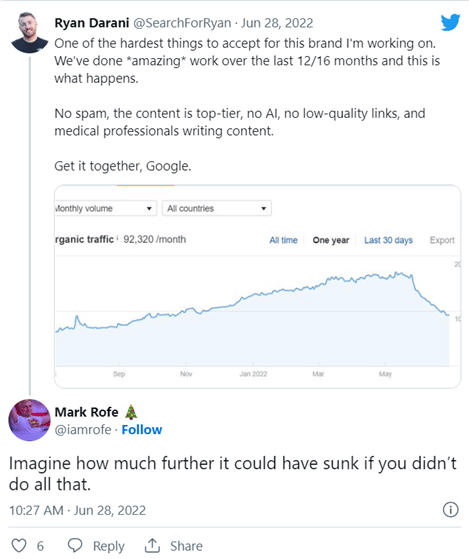
So, we’re now in recovery mode.
We’re throwing absolutely everything we have at identifying the problem.
From what I’ve assessed, there’s no clear thing we’ve done wrong.
However, the links we haven’t built could be one of the core reasons for the drop. We simply didn’t have the strength to hold up such sensitive content.
I may update this case study in the future, who knows.
But for now, that’s where we are.
I hope you enjoyed it!